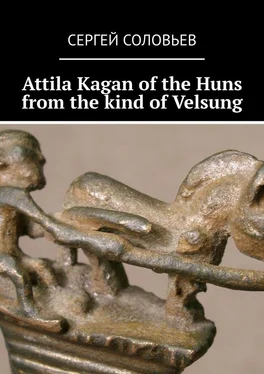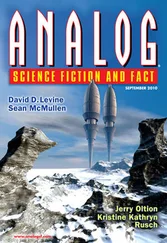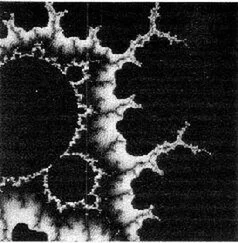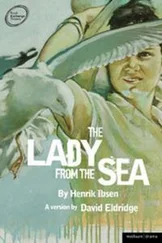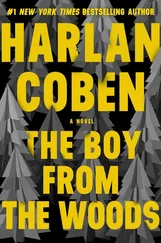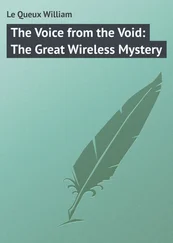Сергей Соловьев - Attila Kagan of the Huns from the kind of Velsung
Здесь есть возможность читать онлайн «Сергей Соловьев - Attila Kagan of the Huns from the kind of Velsung» — ознакомительный отрывок электронной книги совершенно бесплатно, а после прочтения отрывка купить полную версию. В некоторых случаях можно слушать аудио, скачать через торрент в формате fb2 и присутствует краткое содержание. ISBN: , Жанр: Прочая документальная литература, История, Детская образовательная литература, на английском языке. Описание произведения, (предисловие) а так же отзывы посетителей доступны на портале библиотеки ЛибКат.
- Название:Attila Kagan of the Huns from the kind of Velsung
- Автор:
- Жанр:
- Год:неизвестен
- ISBN:9785449804464
- Рейтинг книги:5 / 5. Голосов: 1
-
Избранное:Добавить в избранное
- Отзывы:
-
Ваша оценка:
- 100
- 1
- 2
- 3
- 4
- 5
Attila Kagan of the Huns from the kind of Velsung: краткое содержание, описание и аннотация
Предлагаем к чтению аннотацию, описание, краткое содержание или предисловие (зависит от того, что написал сам автор книги «Attila Kagan of the Huns from the kind of Velsung»). Если вы не нашли необходимую информацию о книге — напишите в комментариях, мы постараемся отыскать её.
Attila Kagan of the Huns from the kind of Velsung — читать онлайн ознакомительный отрывок
Ниже представлен текст книги, разбитый по страницам. Система сохранения места последней прочитанной страницы, позволяет с удобством читать онлайн бесплатно книгу «Attila Kagan of the Huns from the kind of Velsung», без необходимости каждый раз заново искать на чём Вы остановились. Поставьте закладку, и сможете в любой момент перейти на страницу, на которой закончили чтение.
Интервал:
Закладка:

Pendant in the shape of a snake biting its tail. III millennium BC
GIM, Moscow.
On Yamal, the first finds of the remains of people of a European type were recorded in 1935. The oldest find is dated 1—2 century AD (treasure of various valuable things). Mummies of people, Caucasoids were found (these are mummies, preserved in permafrost, they still preserved red hair from human remains) buried in birch bark coffins with household items, and many richest finds were found, the most famous of which is a silver dish with the image of the ascension Alexander the Great. The legends of the giants living on the northern islands are also transmitted by Adam of Bremen in the Slavonic Chronicles. According to him, the friezes reached the island in the Far North, hidden by fog and fenced off on all sides by mountains, and the island is inhabited by giants living in caves, and in there were many treasures, some of which the Friesians managed to steal.

Ascension of Alexander. A find on the Yamal Peninsula. Hermitage Museum
As can be seen from the foregoing, the Ghana-Huns-Huns are identical, and judging by the legends of different Indo-European and Finnish peoples, they are servants of the gods (Attila the God of God), one of the cult attributes is the worship of a snake (dragon), they are characterized by the burial of the mound type (and cremation and inhumation), women wore temporal rings of the Volyn type, as well as snake-shaped jewelry. And the historical Huns, at least part of them, were not of Mongolian origin at all, and came from the territory of the Russian North, and more than once. Their habitat was highly revered by the surrounding peoples, so there are many finds of Iranian and Byzantine origin, confirming this.
The place of the exodus of the Indo-Europeans and the emergence of ancient cults
The location of the ancestral home of the Indo-Europeans has always been a stumbling block for the scientific community and I would like to give a number of arguments for the primary habitat in the Ob-Yamal, Pechora, Arkhangelsk and Vologda regions and the islands of Novaya Zemlya. What makes it possible to come up with such an unconditional opinion? This geographical reference to this area is due to myths and tales of Ganesha, Skanda, Indrik-beast. No one can argue that this is the closest place to the European part of the continent where the remains of mammoths are massively found, and one of the most famous is Yamal, and the most famous find is the Yamal mammoth Masha (Tikhonov A.N., Khrabry V.M. Mammoth from Yamal, journal Nature. 1989. No. 6 P. 47)
So. What kind of beast is Indrik, and what evidence of him remains? In the Russian apocrypha, especially in numerous versions of the “Spiritual Verse on the Pigeon Book”, the name of this beast is in various forms: Indrok, Indra, Kondryk, Beloyandrik, Vyndrik, Unicorn, Unicorn and Unicorn. Name options can be summarized in two:
Indrik and Unicorn (the name White is also important):
Beast mother to all beasts…
And he was digging with his horn mother cheese to the earth,
Dug the keys all deep,
He took out all the boiling water.
This beast lives over the ocean-sea,
And he walks here through the dungeon…
Passes all the mountains of white stone,
Cleans streams and grooves,
Skips rivers, cold fountains…
The Pigeon Book
In different lists of the verse about the Pigeon Book there are various features in the image of Indrik, but in all he is called “father to all beasts.” He walks the dungeon, “skips rivers and lodges, or lives on Tabor Mountain (that is, Mountain of Light,” “when he turns around, all the animals worship him.” Or he lives on the Holy Mountain, eats and drinks from the Blue Sea He doesn’t hurt anyone. Or he walks through the dungeon like a “sun through the skies.” The “Pigeon Book” is a collection of East Slavic folk spiritual poems from the late 15th and early 16th centuries, the questions and answers of which provide information about the origin of the world. The book united both Christian and pagan motives. the tragedy of the schism in Orthodoxy, and was preserved among the Old Believers. According to Russian folklore, Indrik is endowed with the features of the owner of the water elements, springs and founts, and acts as an adversary of the snake. Indrik, as the owner of the water element, is close to the mythical bird Syrin – the symbol of water and fertility. Images of Indrik are often combined with a “wicker”, which in ancient times means water. Often, in the works of folklore, the “homeland” of Indrik the beast is called – full of wonders of the Indus-land – India, which is not accidental, but Indium was somewhat in the history of Indo-European migration, and one was later described by Herodotus in the Caucasus as Sindika, an area in the Kuban region.
“And somewhere it would be audible for a fool to live,
Yes stupid to live, unreasonable?
And where, you hear, there is an Indian Earth,
Is the land of turkey all rich?
Like a lot of gold-silver there,
Yes, for more of that good pearl.
In the Indian land, the steppes are wild,
The steppe is wild, the forests are dark.
Yes, Indric the beast lives in those forests:
It’s all pearly,
And the tail mane is gold-plated,
And his hooves are all damask
From his nostrils fire burns,
Smoke emanates from his ears.
He runs to drink in the Tarja River,
He runs, runs – the whole earth trembles.”
Here, one can see that Tarja River is mentioned as the place of the ancestral home of the Indo-Europeans, which remained with the Hellenes in the form of Tartarus, as one of the places of the country of their ancestors.. Researchers have established the indisputable connection of Indrik the beast with the Vedic and Hindu deity Indra, and his weapon – a vajra, and a wahana (bearer) is the elephant of Ayravat, which also brings him closer to Ganesha, and on whose behalf the name of the country – India, and the sacred river – Indus, and the people – Indians, and religion – Hinduism are formed. And in the Russian North, many names of rivers with the most ancient common Indo-European root “indus” are still preserved. For example, the Indiga river, these are the river basins between the Pechora and Mezen rivers, the river flows into the Barents Sea, and one of the Indigi tributaries is the VREYA river (and it is known that Iriy-Vyriy is the name of the Kingdom of Heaven in Slavic myths). from Yamal, west of the Ob, in the same administrative district. The presence of places with the sacred name “Ida” in the Russian North is also interconnected. Ida is a village in the Babushkinsky district of the Vologda Oblast of Russia, Ida, the sacred mountain on the island of Crete, Ida, the sacred mountain of Troy, Ida, a river in Siberia, a tributary of the Angara. Ida, a river in Russia, flows in the Vologda and Kostroma region, Ida, a river in Slovakia. And of course, one cannot forget the legend of Idawell Field. Idavall or Idavallen (dr.-Scandinavian. Iðavöllr; Swedish. Idavallen; English. Idavoll) – in Scandinavian mythology – the plain on which the aces lived and had fun.
Scientists suggest that in the era of the ancient Indo-European ethnocultural community, Indra was the single supreme god of the Indo-Europeans. After the collapse of the Indo-European conglomerate of tribes and the departure of the Aryans from the North to the Hindustan peninsula, the memory of the Pre-Slavs, and subsequently of Russians, preserved one of Indra’s many hypostases – “Tsar of animals”, “to all beasts of the mother”. “A brief description of the people of Ostyatsky,” Novitsky says: “Some people who want to confirm the story for authenticity describe it in this way: it’s three arshins long, almost arshins long, its legs are like a bear’s, its horns are folded crosswise, and when digging caves, then it bends and stretches like a crawling snake. Some, contrary to this, argue that these bones belong to unicorns or some other marine animals, during the Noah’s flood they were applied and dried up on the ground with water, but they left the land in antiquity. “And the beast Indrik appeared. And the beast Indrik became the father of all the beasts, the beast of all the beasts. The beast Indrik himself is blue, and his eyes are golden. And maybe the beast Indrik turns into a mighty blue warrior. His eyes are golden, he shines with the blue radiance of inner light, he holds a stone club in his hands, and he is dressed in stone armor. And he is so huge, above the mountains he is underground. The beast Rides the Indrik giant the underground warrior through the underworld in a stone chariot.The wheels of the chariot are huge stone millstones, and monstrous black stone dogs, giant dogs, are harnessed to that chariot. And the eyes of those dogs burn like the lights of a thousand bonfires. And those dogs roar like a thousand thunders. And those dogs breathe fire and smoke. The beast Rides Indrik the giant underground warrior in the underworld in his chariot. And he fights with lizards and dragons underground. But the Underground Lizard creeps away from it into its hell. And he closes his hell on the copper door. “Throughout the Russian North and even further – in Manchuria and China – legends about a strange creature of unprecedented growth named indrik-beast are widespread. He is supposedly the size of an elephant and endowed with horns that perform the function of an earth-moving device. Descriptions of the giant mole named tin-shu or yin-shu (“the mouse that hides”) we find in ancient Chinese books. Despite the hyperbolic dimensions of the incredible beast, it should be recognized that folk art is by no means a baseless fantasy. Life and real observations gave storytellers for this legend quite reliable material.
Читать дальшеИнтервал:
Закладка:
Похожие книги на «Attila Kagan of the Huns from the kind of Velsung»
Представляем Вашему вниманию похожие книги на «Attila Kagan of the Huns from the kind of Velsung» списком для выбора. Мы отобрали схожую по названию и смыслу литературу в надежде предоставить читателям больше вариантов отыскать новые, интересные, ещё непрочитанные произведения.
Обсуждение, отзывы о книге «Attila Kagan of the Huns from the kind of Velsung» и просто собственные мнения читателей. Оставьте ваши комментарии, напишите, что Вы думаете о произведении, его смысле или главных героях. Укажите что конкретно понравилось, а что нет, и почему Вы так считаете.
